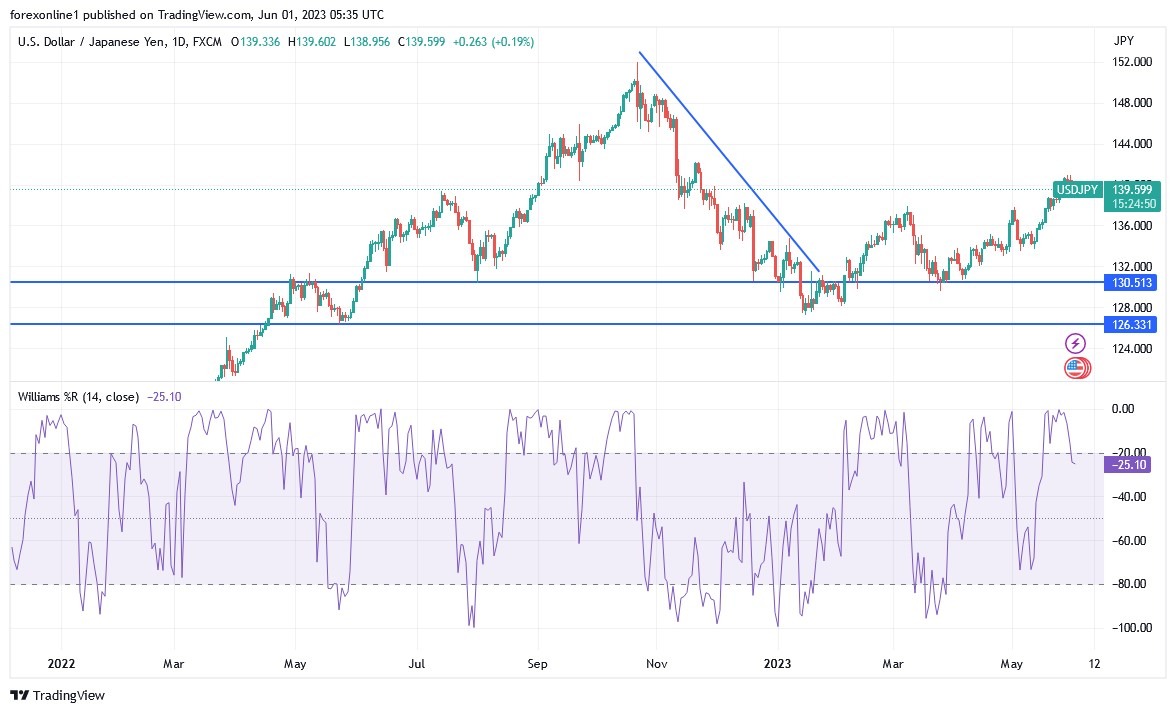For three consecutive trading sessions, the USD/JPY currency pair is exposed to profit-taking sales that pushed it towards the 138.95 level, before settling around the 139.65 level at the time of writing the analysis. The Japanese intervention in the forex market stopped the collapse of the Japanese yen.
Warnings of official intervention may have come earlier than some JPY-watchers had anticipated, but they are just as focused as last year on the pace of the Japanese currency's decline rather than any specific levels. The breach of the closely watched 140 level against the dollar seems to have prompted officials to move forward with speculation on government action by holding an unscheduled meeting on Tuesday. Last year it was a move toward 146 that triggered the first Japanese intervention since 1998, although in the run-up to that there had been frequent official comments warning of the possibility of direct action.
Analysts were quick to highlight the different environment now last September when the currency was down more than 20% on the year and facing a cliff. While the BoJ's ultra-easy monetary policy continues to weigh, with higher interest rates abroad favoring the likes of the dollar and the euro, the country's trade deficit is less impactful and factors such as higher inbound tourism will provide some support. Commenting on this, Shusuke Yamada, an analyst at Bank of America in Tokyo, said: “The experience of the past year indicates to us that we cannot rule out the possibility of intervention depending on the speed of the yen’s depreciation or exchange rate levels.” However, "with oil prices stabilizing, wages rising and foreign tourists returning, the cost-benefit calculation for a weaker yen has improved, so there may not be much urgency."
On Tuesday, a senior currency official said the government would take action if necessary on a weaker yen, in remarks after the first trilateral meeting between the Finance Ministry, the Bank of Japan and the Financial Services Agency since March. It followed a warning from Finance Minister Shunichi Suzuki on May 26, a day after the yen fell below 140 to the dollar for the first time since November.
However, there are some benefits to the Japanese economy from a weaker currency as it will help achieve targets such as the recently increased target of 100 trillion yen ($715 billion) in inward FDI by 2030. The stock market also benefits from the arrival of the Topix index. to its highest levels. Since 1990 this month, while official data showed that more than 1.9 million foreigners visited the Asian country in April, about two-thirds of pre-Covid levels.
Commenting on the performance of the USD/JPY pair, Daisuke Ono, chief analyst at Sumitomo Mitsui Banking Corporation, said: “It seems that the weakness of the Japanese yen brings benefits such as stronger performance of stocks, help in domestic tourism and Japan's attempt to attract foreign investment, while its decline is more gradual. from last year.” And "verbal intervention was expected to start around 140 like last year, but this year the situation is different."
The analyst sees little opportunity to intervene until last year's low of 151.95 per dollar is breached. The Japanese currency was trading around 139.75 on Wednesday, down about 6% since the beginning of the year. Hedge funds hold more bearish bets on the Japanese yen than they did at the time of the September intervention, according to the latest data from the CFTC. However, a measure of total merchant position from Citigroup Inc. The downside bets are less extreme.
This could tempt more bets on continued yen weakness, not least because Bank of Japan Governor Kazuo Ueda has maintained a dovish tone and repeatedly said he will continue monetary easing to achieve the 2% inflation target.
Dollar expectations against the Japanese yen today:
- The recent selling operations did not remove the USD/JPY currency pair from its bullish path so far.
- It is still closest to the psychological resistance level of 140.00, which confirms the bulls' control over the trend.
- In general, the USD/JPY currency pair may witness a state of stability until the markets and investors react to the results of the important US economic data, led by the US jobs numbers.
- Positive results may bring bulls momentum to move towards the resistance levels at 140.60, 141.20, and 142.00, respectively.
On the other hand, if the data results are less than expected, the bears may find an opportunity to move down towards the support levels at 138.00 and 137.00, respectively. It is the last level and the best return to buy the currency pair.
Ready to trade our daily Forex forecast? Here’s a list of some of the best regulated forex brokers to check out.



